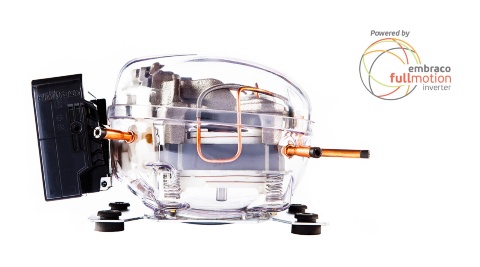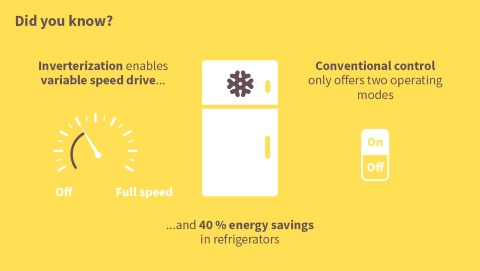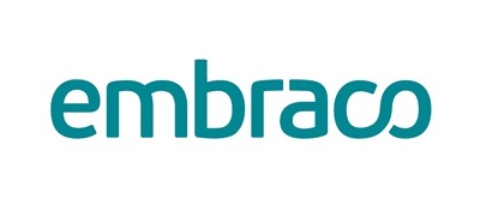
For centuries humans have tried to preserve food through refrigeration. The fridge introduced a new level of convenience to homes and now, thanks to intelligent power control, is also economical. It sets an example for other electric domestic helpers to follow.
History of refrigerators
From ice box to cool cabinet
A cold, biting wind blew through on a gray November morning in 1806.
Snowflakes fell on gigantic blocks of ice, waiting in stacks on the shore of the frozen lake. A few men had already hoisted the first blocks onto the ramp and into the carriage, led by four horses. Soon the blocks were ready to start off on a long journey – from New England to the hot Caribbean.
Preserving food through refrigeration and enjoying chilled beverages was already practiced in antiquity by harvesting ice from mountainous regions and storing it deep in the ground in ice cellars. Beginning in the 19th century, the ice trade rapidly gained importance. Huge amounts of time and effort were invested cutting large ice blocks from frozen lakes and rivers, shaping them to size and shipping them long distances by sea.
The invention of the refrigerator

Refrigerating foods became easier and more comfortable after researchers successful made artificial ice – by combining chemicals, some of them toxic, with a technical process. This, of course, ultimately led to the invention of the refrigerator. Already back in the 1930s, electric fridges were widespread in the USA and Cuba. In contrast, the iceman continued delivering ice to German households well into the 1950s. The ice kept food cool in specially lined wooden cabinets.
Energy-guzzling home appliances
Be it manpower, chemicals, or generating electricity to power fridges, the luxury of refrigeration requires a lot of effort – and affects the environment.
Every day we use a variety of appliances in our homes. From washer, to dryer, to air conditioner, to fridge, they all add simplicity and convenience to daily life. Until now, these appliances have shared one common trait: a motor with two states, “on” and “off”. Accordingly, it had two power levels, all or nothing. Full power meant consuming the highest possible amount of energy. The cost of these electric domestic helpers reaches far beyond the price tag to include the cost of electricity over an appliances’ lifespan. For instance, in 2015 there were an estimated 1.2 billion old, loud, energy-guzzling fridges still in use worldwide. Each one consumes around 480 kilowatt hours (kWh) per year.
Inverterization of all fridges globally with Infineon semiconductors would save as much energy as Sweden consumes in a year.
Switch on your brain, don’t give up the ghost
Evening has come and you’re at home, settled on the sofa and engrossed in a book. Suddenly, you hear a faint gurgling sound but have difficulty locating it. In one fell swoop, a metal clang and a deep, gurgling rattle begins. Your moment of peace and relaxation is over. Time and again, the fridge reminds you of its presence, with increased frequency and volume. Apparently, the fridge is quite the extrovert – or is suffering from wear.
Because motors of non-inverterized appliances can’t regulate their speed, they always run at full power. This wears out components much quicker – and makes them more susceptible to failure. Moreover, these devices are noisy, a characteristic that can get on your nerves.
Modern home appliances
The digital inverter
But shouldn’t we expect home appliances to be kind of smart? For instance, by consuming only as much electricity as they actually need – because they know precisely when and how much is required to run. The necessary intelligence is already available today and a growing number of various appliances are fitted with the technology. Chips from Infineon make them smart thanks to the interaction of sensors, microcontrollers and power chips. Combining these different semiconductors allows optimal regulation of the current flow. Technology experts call this a frequency inverter - or simply inverter.
Motors must be intelligently controlled so they perform just as required.
Small components with big effects
The principle is simple: by constantly gathering data, such as temperature, humidity and motor rotational speed, sensors enable an appliance to run efficiently. Based on this data, a mini computer, or microcontroller, calculates the control commands required. Power chips, true energy savers, implement these for the motor’s optimum rotational speed, keeping the fridge’s temperature constant. This is much more efficient than always turning the motor on or off.
We are aiming at intelligent household appliances to become the standard in the future. For this, Infineon is developing semiconductors that are cornerstones to inverterization - such as sensors, microcontrollers and highly efficient power chips.
Find an overview of all products online in the home appliances section.

Embraco compressors
Energy-saving compressors equipped with Infineon devices

The fridge is a well-known friend in our daily life and thanks to intelligent power control it can also be economical. Learn how Embraco compressors save energy in modern refrigerators equipped with Infineon semiconductor solutions.
The compressor is the heart of every refrigerator. And Embraco is the world's technology leader of this crucial piece of technology. Embraco has been a pioneer in the development of variable speed compressors. The Embraco Fullmotion compressor varies the cooling capacity according to need, providing a reduction in energy consumption by up to 40%.
The smart principle of inverterization

Embraco's intelligent inverters have sensors that identify the temperature inside the cabinet. The sensors send signals to the compressor, changing its speed to reach the target temperature in a more efficient way. Thanks to Infineon’s inverter solution based on high-voltage CoolMOSTM transistors, and half-bridge drivers Embraco compressors can adjust the speed to the actual cooling need of the refrigerator.
Compressors go green
See the Embraco VESF compressor in action, and learn why it is able to save up to 40% of energy.
Advantages at a glance
- Energy saving of up to to 40% compared to conventional compressors.
- Being the quietest compressors in the market, noise and vibration levels are significantly lower because of non-continuous operation under full load.
- More durable thanks to gently starting engines, thus lower operating hours under constant load.
- Better food preservation thanks to a more stable temperature inside the cabinet.
Sounds unbelievable? Not at all – start your contribution to energy efficiency with Liebherr CNP 4358 Premium NoFrost.
About Embraco

Embraco, as a technology leader company in the sector of hermetic compressors for refrigeration, has a commitment to invest in innovation and sustainability. Embraco offers solutions that are more environmentally friendly, challenging prevailing technologies.
This is why Embraco and Infineon are working together to reduce the world’s energy consumption. Learn more about Embraco innovations.
Last update: November 2016


